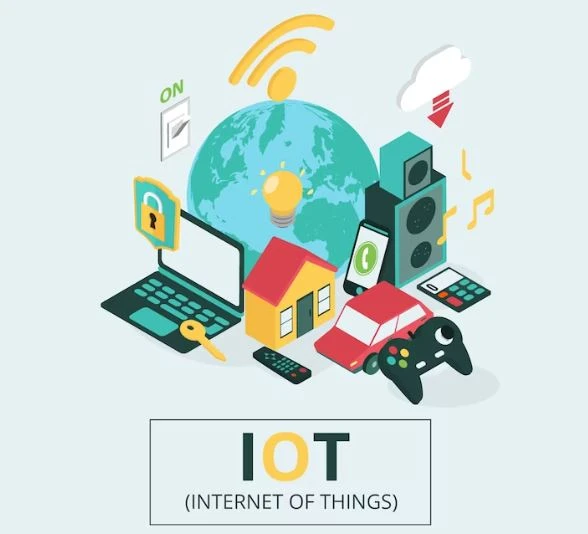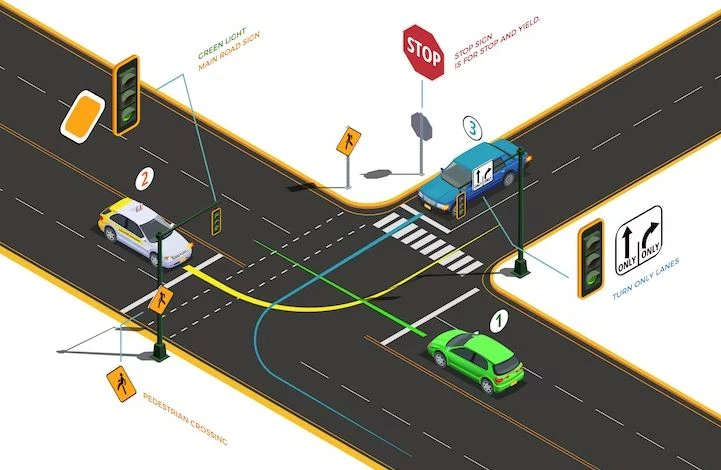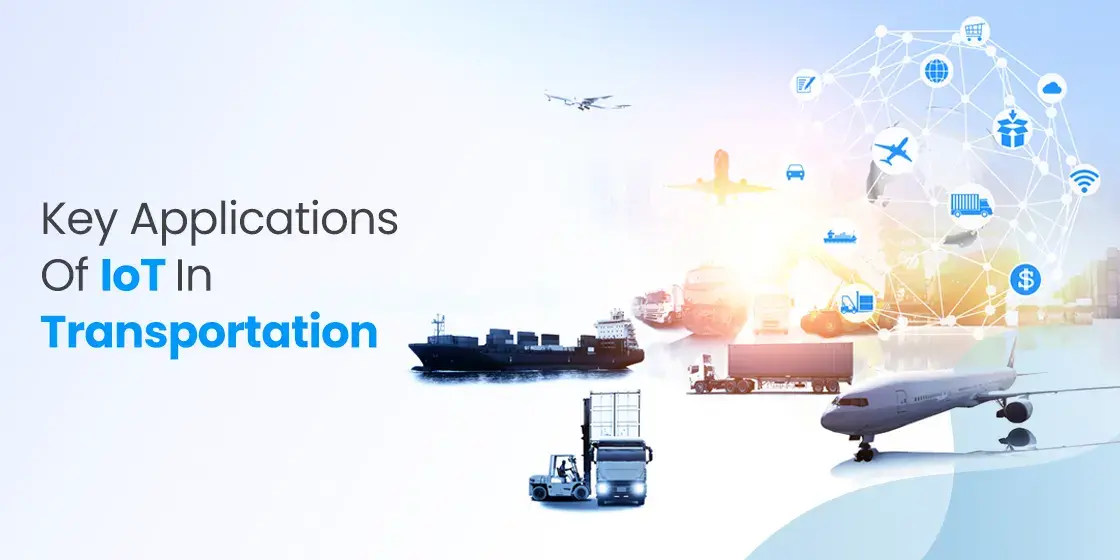Table of Content
Understanding the Key Prospects of Using IoT in Transportation
The rising traffic jam situations in different cities around the world is becoming a big issue. It is something that cannot be managed with one-way manual planning, but with a complete automation strategy. Luckily, IoT has offered a way to resolve this issue in a unique convenient manner. As we know that IoT helps to automate different process using smart interconnected strategy, this solution can also be implemented in the management of transportation. It allows administrators to manage the traffic efficiently without doing anything manually. This impact of IoT in transportation is proving to be a big plus for those cities that regularly face traffic jams on different routes.
The emergence of IoT has certainly opened up new ways of automation for every industry. Just like retail and healthcare, the transportation industry can also take good benefits from it. It is a technology that connects everything together, allowing administrators to find ease in handling different situations easily. The development of a system that supports IoT is however a difficult job, as it requires greater level of technical understanding. It is therefore recommended to always consult with a professional software development company to build quality systems for IoT.
The application of IoT in transportation are limitless, but many of us do not know about it precisely. We usually relate this technology only with the IT industry, which is certainly an underestimation for IoT. In this blog, we will try to unravel the bigger picture of IoT, as how it can be used to manage transportation effectively. This will let you know about different applications of IoT in transportation, from traffic management to alternate routing and more others.
But, before moving straight into that, let us first start with some basics below. Let’s understand why adopting IoT is quickly becoming a major trend in the world, and how transpiration companies can take good advantage from it.
Adoption of IoT Technology

During the last few years, some notable technologies have found a strong footing in the market. Internet of Things (IoT) is one of those names that has started a new trend of cloud automation in the industry. It has let the people know how different devices and components can be connected together to form a unified tech infrastructure. This concept was not known earlier to the people, and hence the potential of working with cloud as well. But with the rise of technologies like artificial intelligence and blockchain, these things started to uncover, allowing people to know about IoT in a much effective manner.
This trend has now picked up a great momentum, as adoption of IoT by different businesses is getting a good pace in the market. They have seen the potential of this technology, as how it can automate different things by bringing everything under the umbrella of cloud. The good thing is that the application of IoT is not just limited to one industry. Instead, it can be used to simplify and automate different functions in diverse industries regardless of their working nature and complexity.
Due to this great leverage, we are witnessing a quick rise and adoption of IoT technology in the world. It is simplifying collaboration without disrupting the core functional methods of different components. The tech experts around the world precisely understands this fact, which is why they are paying high attention to further optimize this technology to meet bigger goals and challenges.
Key Implementation of IoT in Transportation
Many people do not know how IoT can be used to grab tons of benefits in transportation. They usually think that technologies like IoT or artificial intelligence can be used within the circuit of IT industry. This is certainly a wrong approach, because the prospect of these technologies is bigger than it seems. Their implementation encompass different industries, making them a perfect technology to bring advancement in different industries.
Talking about transportation, it can also take hundreds of benefits from IoT, provided a proper system is put in place to track and monitor everything. For starters, we will list down some of the core implementations of IoT in transportation in detail below. It will let you know how beneficial this technology can prove to be for transportation in terms of managing and routing traffic effectively.
Let’s take a look at these points in detail below.
Public Transportation Management

With the help of Internet of Things, public transportation can be optimized as per the existing scenarios of daily commute. We all know pretty well that people in big numbers regularly use public transport to commute from one place to another. It is their go-to method because of being cheap and convenient in nature. However, due to the rising number of daily commuters, public transport in some countries is becoming a big issue day by day. Though it is accessible to everyone, but is also time taking due to the presence of too many commuters.
Furthermore, due to long road jams, many people are currently avoiding public transport to save some time. They take private transport or ride hailing service to commute daily which is somewhat more expensive than public transport. This rising issue can be solved by incorporating smart IoT technology in the transport management plan of any city. It will let the administrators know how many people are commuting from one bus daily and what is their major destination.
This critical information will allow authorities to manage the buses wisely. They can also clear the routes smartly by knowing about the jams in prior through advanced IoT sensors. All of this can be done by using smart IoT-based systems in the main planning department of the city transport.
Smart Logistics Solution
Internet of Things can help transport companies to manage logistics using big data consulting. It is one of those operations that usually requires complete manual attention from the transportation companies. But, the trends are about to change, as IoT will simplify this job for transport companies in a unique manner. By placing smart IoT sensors inside the truck, administrators will easily know where the shipment is currently and how much time will it take to reach the destination. This information will be shared in real time, meaning that there will be no lapse or error in exchanging the data.
To create such advanced systems, it is best advised to first hire dedicated developers with an ample amount of market experience. It should be noted here that these professionals should have a sound knowledge about IoT and other technologies that are related to it. If you are facing trouble finding talented resources, you can also go towards the outsourcing model. It will help you to connect with the right resources that can develop quality IoT systems as per the latest industry standards.
So, using IoT in logistics can prove to be highly beneficial for transport companies. It will help them to make timely decisions and manage the whole fleet smartly. All of this will be done without requiring any manual effort, because IoT will take care of all the automation.
Traffic Management

We all know that traffic management is a grave issue in many cities around the world. Keeping a close eye on every route to manage traffic is not simply possible for humans. There are tons of routes operational every day, and keeping everyone in check continuously cannot be done manually. However, with the usage of IoT, things can become a lot more easier. It will not reduce the traffic, but will help authorities to direct them smartly before reaching to a deadlock jam position. And all of this does not require any manual effort, as IoT infrastructure will take care of all the management on its own.
Speaking about the details, the data obtained by IoT sensors will help the authorities know how much traffic usually passes through a route on routine bases. Based on this information, they can come up with different plans to create alternative routes for public transport, heavy trucks and other vehicles. It is a data driven approach that helps to make better decision all the time. It can provide automated reports to the authorities in which different plans can be discussed based on the extracted traffic data.
Many cities like London, Riyadh, Tokyo and others have already started to incorporate IoT to manage the traffic efficiently. They understand the complexity of this task, hence they have started to build IoT-based infrastructures that can oversee all the traffic management plans on their own.
Connected EV Infrastructure
The trend of buying electric vehicles is gathering a good pace day by day. The reason is that these vehicles are fuel efficient, giving no hassle to the owners to bother about petrol usage. Due to this, many companies are planning to produce electric cars more and more, as the demand is currently high in the market. The production of new electric vehicles can be connected with the IoT systems to generate some important information for owners. It can let them know about the nearby EV charging stations, and whether it is currently being used by other people or not.
Similarly, IoT based apps can also allow people to book charging slots in prior. It can be developed using a complete information about the available charging stations. This way, everyone can book their slots from the comfort of their homes. It will reduce the rush on charging stations, and will keep it functioning all the time. Furthermore, some IoT sensors can be placed to stations to collect data about the incoming cars. This data can be shared with the respective companies who are looking to further optimize their cars using the real market information.
Overall, the prospect of using IoT in electric vehicles looks to be great. It just needs a proper system built using the right software development methodology to make all the things work. So, try to work with the best resources knowing the right market conditions, as that will help you to make correct decisions.
Driving Safety

Internet of Things (IoT) can also help car owners with various types of safe driving tips. IoT sensors can collect data on speed, distance traveled, and other factors, and this data can be used to alert drivers about upcoming rest breaks, kilometer-per-hour limits, and other safety hazards. For example, if a driver is approaching a sharp curve, the IoT system can send a warning signal to the steering wheel. This can help the driver to slow down and take the curve safely. This tip is very useful for the drivers that are traveling at night, as focus of people can go out during that time.
Additionally, the IoT system can also monitor road and environmental conditions, and it can send warnings about landslides, animals, and other hazards. This type of real-time data is essential for ensuring the safety of drivers and passengers. As IoT technology continues to develop, we can expect to see even more innovative ways to use it to improve steering wheel control systems. Recently, Tesla has introduced this feature in some of its latest models, so we can certainly expect this technology to get more traction in the coming days.
In the future, we can expect to see IoT-powered steering wheel control systems that are even more sophisticated. These systems will be able to collect and analyze even more data, and they will be able to provide drivers with even more accurate and timely warnings.
Frequently Asked Questions
| What is Internet of Things (IoT)? The Internet of Things (IoT) is a network of physical objects that are embedded with sensors, software, and network connectivity, enabling them to collect and exchange data. These smart objects can range from simple “smart home” devices to wearables like smartwatches, RFID-enabled clothing and more others. |
| What is the importance of IoT in transportation industry? Internet of Things (IoT) is having a major impact on the transportation industry, and its importance is only going to grow in the years to come. IoT devices are being used to improve safety, efficiency, and sustainability in transportation, which is why it is quickly becoming important for the industry. |
| How IoT can help in traffic management? There are many ways in which IoT can help authorities in traffic management. IoT sensors can be used to collect real-time data on traffic conditions, such as traffic flow, congestion, and accidents. This data can be used to optimize traffic flow and improve safety. |
| How IoT can help to manage logistics? With the help of IoT, transport companies can manage logistics efficiently. IoT sensors can be used to track the location of shipments in real time. This information can be used to improve visibility and optimize routing. |
| How IoT can help in public transport management? The prospect of using IoT in public transport management is huge. IoT sensors can be used to count passengers boarding and disembarking from vehicles. This information can be used to optimize routes, improve capacity planning, and track ridership trends. |
Final Words
That takes us to the end of this article in which we have discussed about the implementation of IoT in transportation industry. The knowledge of IoT is certainly very important for stakeholders of transport companies. It is a very vital technology that can help them in various ways, including security, fleet management, regular monitoring and more others. Using IoT, different processes can be streamlined without making any manual effort. It is therefore recommended to learn about the prospects of IoT in transportation properly, so that your company can take correct decisions moving forward.
Meanwhile, if you are looking for a company that can help you to build advanced IoT-based software systems, get in touch with us today. We will assist you to build quality products rightly as per the needed functional requirements.
Empower your digital initiatives with BariTechSol, a premier custom software development company. Our skilled team tailors cutting-edge solutions to your unique needs. Elevate your tech experience and stay ahead in the digital realm. Partner with BaritechSol and code the success of your next big idea.


